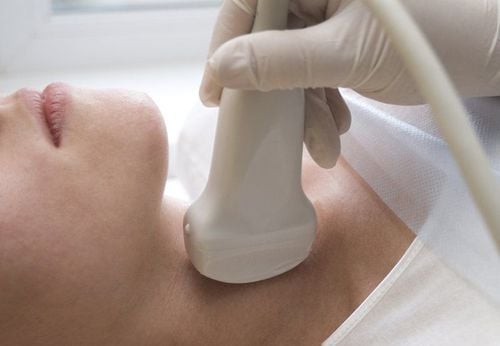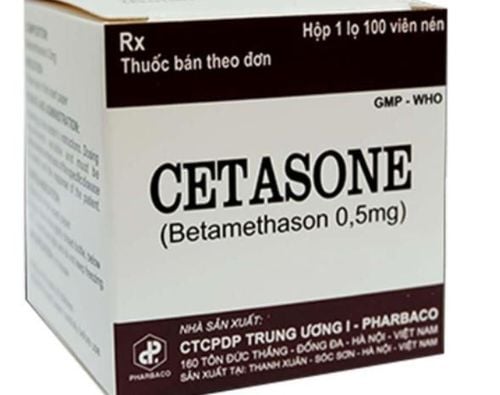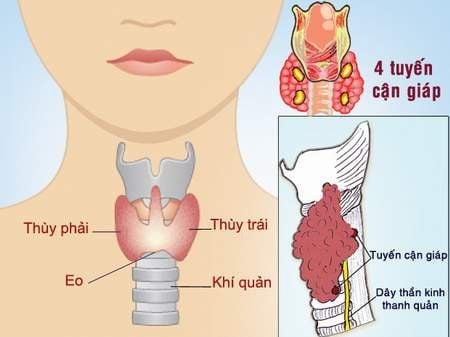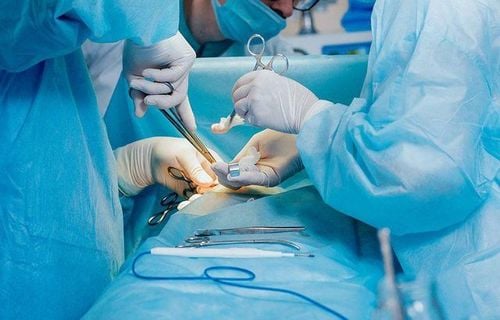This is an automatically translated article.
The thyroid gland is a butterfly-shaped gland located in the neck of a person, the thyroid gland produces hormones that control every aspect of metabolism, from heart rate to the rate at which calories are burned. Although important, in some cases a thyroidectomy is necessary.1. What is thyroidectomy?
Thyroidectomy is the surgical removal of all or part of the thyroid gland, used to treat thyroid disorders, such as thyroid cancer, thyroid enlargement, and hyperthyroidism.
The percentage of thyroid gland removed during thyroidectomy depends on the reason for the surgery. If you only need to remove part of your thyroid gland, you can still function normally after surgery. However, if your entire thyroid gland is removed, you will need daily treatment with thyroid hormone to replace the thyroid's natural function.
2. When is thyroidectomy necessary?
Your doctor may recommend thyroidectomy if you have conditions such as:
Thyroid cancer: Cancer is the most common reason for thyroidectomy; Goiter (enlargement of the thyroid gland but not cancer): Removal of all or part of the thyroid gland is one of the options if you have a large goiter that is causing discomfort, difficulty breathing, or difficulty swallowing. goiter causes hyperthyroidism. Overactive thyroid (hyperthyroidism): Hyperthyroidism is a condition in which your thyroid gland produces too much of the hormone thyroxine. If you have problems with antithyroid medication and do not want radioactive iodine treatment, surgery to remove the thyroid gland may be an option. Unknown or suspected thyroid nodules: Some thyroid nodules cannot be determined to be cancerous or noncancerous after biopsy testing. Doctors may recommend that people with these nodules undergo thyroidectomy if the nodules are at higher risk of cancer.
3. Complications of thyroid surgery
Thyroidectomy is generally a safe surgery, but as with any surgery, thyroidectomy carries a risk of complications. Potential complications of thyroid surgery include:
Bleeding; Infection ; Low levels of parathyroid hormone (hypoparathyroidism) due to surgical damage or removal of the parathyroid glands. These glands are located behind the thyroid gland and regulate the amount of calcium in the blood. Hypoparathyroidism can cause numbness, tingling, or cramping due to low blood calcium levels; Obstruction of the airways due to bleeding; A voice that is hoarse or permanently weak due to nerve damage.
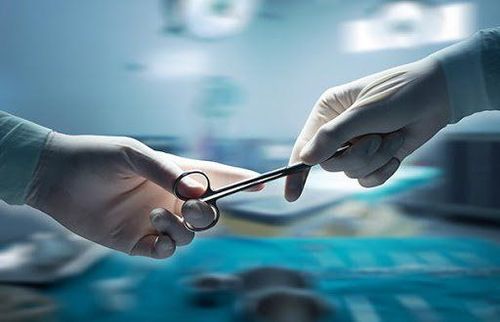
Cắt tuyến giáp nói chung là một phẫu thuật an toàn, nhưng cũng như bất kỳ cuộc phẫu thuật nào, cắt bỏ tuyến giáp có nguy cơ biến chứng
4. What do you need to prepare before thyroid surgery?
Food and medicine: If you have hyperthyroidism, your doctor may prescribe medications, such as iodine and potassium solutions, to control thyroid function and reduce the risk of bleeding after surgery. You may also need to avoid eating and drinking for a certain time before surgery, to avoid complications from anesthesia. Your doctor will give you specific instructions about this. Other precautions: Before a scheduled surgery, ask a friend or loved one to help you get home after the procedure. Remember to leave jewelry and valuables at home.5. How does thyroidectomy work?
5.1. Before Thyroidectomy Surgeons usually perform thyroidectomy while under general anesthesia, so you won't be awake during surgery. An anesthesiologist gives you an anesthetic in the form of a breathing gas through a mask, or a liquid drug is injected into a vein. A breathing tube will then be placed into your windpipe to aid breathing during surgery.
The surgical team places a number of devices on your body to help ensure that your heart rate, blood pressure, and blood oxygen stay at a safe level during the procedure. These devices include a blood pressure cuff on your arm and a heart monitor lead that attaches to your chest.
5.2. During Thyroidectomy When you are unconscious, your surgeon will make an incision in the middle of your neck. It can usually be placed in a fold in the skin where it will be difficult to see the scar after the incision heals. Then, all or part of the thyroid gland is removed, depending on the reason for the surgery.
If you have a thyroidectomy as a result of thyroid cancer, the surgeon may also examine and remove the lymph nodes around the thyroid gland.
Thyroidectomy usually takes 1 to 2 hours. Sometimes it can take more or less time, depending on how much surgery is needed.
There are several approaches to thyroidectomy, including:
Conventional thyroidectomy: This involves making an incision in the middle of your neck to access your thyroid directly. Most people will probably use this method. Transverse thyroidectomy: This procedure avoids slitting the neck by making an incision inside the mouth. Laparoscopic thyroidectomy: This method uses smaller incisions in the neck. Surgical instruments and a small video camera are inserted through the incisions. The camera guides your surgeon through the thyroidectomy. 5.3. After Thyroidectomy After Thyroidectomy, you are moved to the recovery room, where the health care team monitors your recovery from surgery and is under anesthesia. When you are fully awake, you will be transferred to the ward for further care and monitoring.
Some people may have to have a drain placed under the neck incision. This drain is usually removed the next morning.
After a thyroidectomy, some people may experience neck pain and a hoarse or weak voice. This does not mean that there is permanent damage to the nerve that controls the vocal cords. These symptoms are usually short-lived and may be due to irritation from the breathing tube inserted into the windpipe during surgery or as a result of nerve irritation from surgery.
You can eat and drink as usual after surgery. Depending on the type of surgery you had, you may be able to go home the same day of the procedure or your doctor may recommend that you stay in the hospital overnight.
When you get home, you can usually return to your usual activities. However, you should wait at least 10 days to two weeks before doing anything vigorous, such as lifting heavy weights or doing sports that require vigorous movement.
It takes up to a year for the surgical scar to fade. Your doctor may recommend using a cream to help limit scarring.
5.4. Thyroidectomy results The effectiveness of thyroidectomy depends on how much thyroid is removed.
Partial thyroidectomy: If only part of your thyroid gland is removed, the rest usually takes over the function of the entire thyroid gland. So you may not need thyroid hormone therapy. Total thyroidectomy: If your entire thyroid gland is removed, your body cannot make thyroid hormone. Without replacement, you will develop signs and symptoms of an underactive thyroid (hypothyroidism). Therefore, you will need to take one pill each day that contains the synthetic thyroid hormone levothyroxine (Synthroid, Unithroid, others). This is hormone replacement, which resembles the hormone normally made by your thyroid gland and performs all of the same functions. Your doctor will do blood tests to see how much thyroid hormone replacement hormone you need.
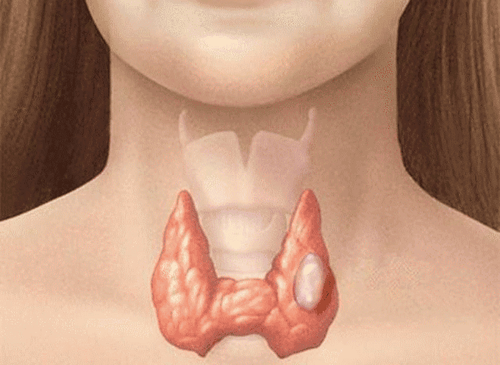
Hiệu quả của việc cắt bỏ tuyến giáp kéo dài bao lâu phụ thuộc vào lượng tuyến giáp được loại bỏ
In short, thyroidectomy needs to be performed at a quality and reputable medical facility with a team of experienced doctors and modern equipment to be safe. for the patient. Currently, when suffering from thyroid-related diseases, patients can go to Vinmec International General Hospital, which is one of the leading prestigious hospitals in the country, trusted by a large number of patients. medical examination and treatment. Not only the physical system, modern equipment: 6 ultrasound rooms, 4 DR X-ray rooms (1 full-axis machine, 1 light machine, 1 general machine and 1 mammography machine) , 2 DR portable X-ray machines, 2 multi-row CT scanner rooms (1 128 rows and 1 16 arrays), 2 Magnetic resonance imaging rooms (1 3 Tesla and 1 1.5 Tesla), 1 room for 2 levels of interventional angiography and 1 room to measure bone mineral density.... Vinmec is also the place to gather a team of experienced doctors and nurses who will greatly assist in diagnosis and detection. early signs of abnormality in the patient's body. In particular, with a space designed according to 5-star hotel standards, Vinmec ensures to bring the patient the most comfort, friendliness and peace of mind.
Please dial HOTLINE for more information or register for an appointment HERE. Download MyVinmec app to make appointments faster and to manage your bookings easily.
Reference source: mayoclinic.org




